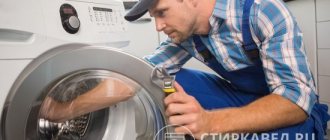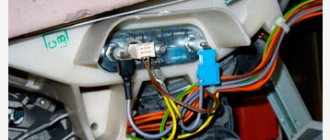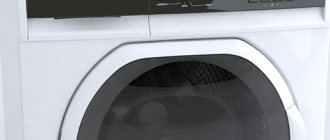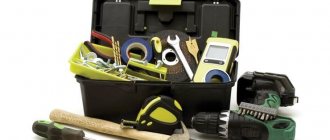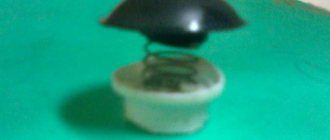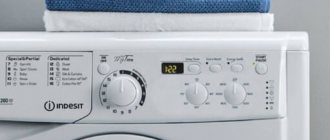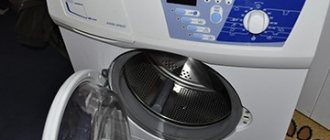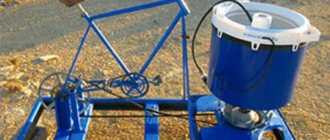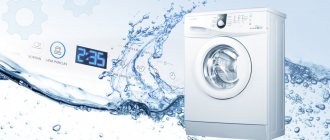Despite the fact that the leadership in the household appliances market still belongs to automatic washing machines, the demand for the purchase of semi-automatic machines is not falling. This is due, first of all, to the fact that the operation of such budget equipment does not require any special skill or connection to communications. The mobility and compactness of semi-automatic devices makes them indispensable assistants in hostels, country houses and summer cottages. Yes, in fact, the quality of semi-automatic machines today is quite high. Among domestic manufacturers of household appliances of this class, Slavda washing machines deserve special mention.
What to look for when choosing
There are several important points to pay attention to when choosing. These include:
- technical specifications;
- type of mechanism;
- presence of spin.
Specifications
The insert of a semi-automatic washing machine contains information about energy consumption, spin and washing indicators. They are displayed in the form of Latin letters, where “A” is the maximum score.
The washing class affects the quality of the washed items. This is an important indicator, since no one wants to deal with removing dirt again after washing. Appliances with class A cope best with washing, and those with class G perform worse.
When operating any household electrical appliance, energy consumption must be taken into account. The smaller it is, the more pleasant it is to use, because it will not greatly affect the budget. The energy consumption indicators of a washing machine are calculated as the electrical energy expended when washing 1 kg of clothes.
The indicator is expressed in Latin letters. For example, A – economical option for energy consumption – 0.19 kW/h; G – the most expensive – 0.39 kW/h. Machines with minimal energy consumption have an indicator of A+, A++, A+++.
Spin quality is an important indicator when choosing a washing machine. It affects how long it takes to dry clothes. The better things are wrung out, the less time it will take for them to dry completely. The quality of the spin can be judged by the residual moisture. For heavy items, for example, jeans, 1000 rpm is required, and for synthetic and cotton laundry - 600 rpm. When the number of revolutions in the device is less than 1000, it is recommended to wring out delicate fabrics by hand. This will help maintain their appearance. In addition to the speed numbers, the spin indicator contains a Latin letter. “A” is the maximum number of drum revolutions and a good spin. In this case, the residual moisture in things will be up to 45%. If there is a letter “G”, then the humidity indicator is 90%.
Semi-automatic washing machines have different loads - 2-8 kg of dry laundry. In order to determine the required volume, you can focus on the following data:
- 3-4 kg for 1-2 people;
- 5 kg for a family of 3-4 people and those who do laundry frequently;
- 6-8 kg for a large family.
Also, a large volume is needed if you plan to wash rugs, blankets, and outerwear.
Activator and drum models
Semi-automatic machines, which are among the top reliable models, can have an activator or drum type design. The first option is more common. And the second is different in that it spoils things less when washing.
If spinning is important to you
The laundry can be spun in the same compartment as washing, or in an additional one. When the device has one compartment, then after rinsing the laundry is placed in the tank. First, things are wrung out. Spinning in the tank allows you to remove moisture as much as possible. If there is a special centrifuge, then things are loaded into it from the compartment where it was rinsed. Some models have the ability to simultaneously turn on rinsing and spinning. The spin speed can vary from 800 to 1200 rpm.
Model called WS-40PET
Quite often, the Slavda WS-40pet washing machine is purchased for small apartments with one or two residents, where there is no need for constant and intensive washing. It is quite powerful, so it is perfect for performing any household tasks.
Standard white and blue still prevail in the design, but, as the instructions say, the manufacturer has the right to change the design. As a result, some people get options with bright prints.
Model WS-40PET
New in WS-50PET
Unlike the WS-40pet, the no less popular WS-50pet can hold about 5 kg, which is quite a lot for a semi-automatic machine. The power and dimensions of this representative have already been significantly increased, due to which the quality of washing has improved slightly.
The design also looks more impressive: a solid-looking white body stands on massive black legs, which makes the unit more stable.
Characteristics of WS-60PET
The Slavda WS-60pet washing machine is already moving away from the standard canons, turning into some kind of full-fledged mechanism. As is clear from the name, it holds about 6 kg, which is usually beyond the power of a semi-automatic device.
WS-60PET
Its appearance is appropriate, reminiscent of old washing machines from the beginning and end of the 2000s. The body is square, like the WS-50pet, and stands on small legs. There is a hatch at the top for loading laundry.
Brand WS-70PET
This Slavda washing machine, on the contrary, classifies us as a traditional type: a small case on a dark stand. Unfortunately, no further changes were made, and the same car, but a little more spacious, entered the market.
WS-80PET Innovations
A similar fate could have befallen the latest model, but the manufacturer still worked hard on its creation. Many users note the strength and durability that is unusual for the line. Its average service life is about 5 years.
WS-80PET
Features of semi-automatic washing machines
Advantages of semi-automatic machines:
- Compactness - the device can be placed even in the smallest room.
- Autonomy - there is no need for sewerage or water supply, just an outlet or an electric generator.
- Lightness – the largest unit will weigh a maximum of only 20 kg.
- Vertical loading - you can easily add items during the washing process without stopping the program.
- Reliability - a simple design rarely fails.
- Economical – energy and water consumption is minimal.
- Technical simplicity - a minimum of modes simplifies the control process.
- Affordable price - the machines are inexpensive, as are the spare parts for them.
The best semi-automatic washing machine can easily replace automatic appliances. It is valued for its ease of use, compactness, efficiency and reasonable cost.
Common disadvantages of all cars
Of course, Slavda washing machines of the WS-40pet model and others have their own significant number of disadvantages. They should be taken into account when purchasing, otherwise the machine will not bring you any benefit.
Remember that the machine:
- Not very durable parts.
- Not the most spacious drum.
- A fairly short hose and wire for connection.
Typically, such devices serve their owner for a couple of years of intensive use, so you should not use a ten-year-old machine that you will pass on to your grandchildren.
Brand
Slavda is a trademark owned by the NOVA company. Registered in 2004, the small family business has now grown and is firmly on its feet. Evidence of this is our own network of factories and the constant interest of the market in products coming off the assembly line.
Manufactured near Krasnodar and in the Irkutsk region (g.
Angarsk) household appliances are distinguished by their reliability, decent quality and, most importantly, affordable prices for domestic consumers. The production of Slavda washing machines uses advanced equipment that allows us to maintain a high bar in its market segment
Problems and their solutions
Every housewife is familiar with the unpleasant situation when the washing machine breaks down and the laundry has to be washed manually. In some cases, you can fix the problem yourself, without resorting to the help of specialists. Here is a list of problems whose solution does not require special qualifications.
Wash does not turn on
One of the common problems that arise with washing machines is when the wash cycle does not start when you press the power button. If the indicators on the control panel do not light up, then the problem is in the electrical supply of the unit. You need to check the socket, plug and surge protector.
In the case when the machine does not turn on, but all the indicators are blinking, you can suspect a breakdown of the UBL or the control module. Any novice technician can figure out the socket, but replacing the UBL or electronic board should be done by a specialist.
Water does not fill
In the event that water does not fill the tank, first of all you need to check whether there is water in the water supply system. After making sure that everything is fine in this regard, you need to clean the supply hose and inlet filter. If malfunctions in the water supply units are excluded, then the control unit is broken.
Water does not heat up
You can find out that the water is not heating up by touching the glass of the loading hatch. If the set washing mode provides a temperature of more than +30°C, and the glass remains cold, then the problem is obvious.
There are several reasons for the malfunction:
- the heating element has burned out;
- The thermostat has failed;
- program error.
The heating element and thermostat are consumable components that require replacement from time to time. To eliminate the control module error, you need to restart the program. If the problem persists, you will have to change the software device.
The drum does not spin
Another unpleasant situation is that the machine works, but the drum does not spin. In this situation, the following problems are suspected:
- the drive belt breaks or falls off - the drum can be easily turned by hand;
- the engine stopped;
- a foreign object is stuck between the tank and the drum;
- program error.
The owner of the machine can remove the stuck object himself, but to repair the engine and replace the belt, it is better to contact a workshop.
Water does not drain
The drain pump (pump) is responsible for draining waste water. To prevent small items left in the pockets of clothes due to the housewife's absent-mindedness from clogging the sewer pipe, the pump is equipped with a filter that should be cleaned occasionally. If the filter is clogged or the pump is broken, the machine will not discharge dirty water. The way out of this situation is very simple - clean the filter or change the drain pump. Only an experienced technician can repair the pump.
How to fix breakdowns with your own hands: instructions
All breakdowns can be sorted to describe the procedure for eliminating them. Let's start with the electrical component.
The diagram below is suitable for any semi-automatic washing machine (with or without rinsing and a centrifuge: “Eureka”, “Saturn”, “Siberia”, “Assol”, “Fairy” or “Slavda”):
- Check the integrity of the power cord.
- Inspect the plug and socket.
- Look under the dashboard (disassembly is determined by your SM model).
- Armed with a tester, check the contacts. If you detect broken wires or low voltage, you will find the cause of the failure.
- Test the relays and capacitors with a tester. If you find broken elements, change them - they cannot be repaired.
- Check the step-down transformer. If you find problems, change them.
- Check the contacts - they may have burned out.
- Only after checking all the above components can you start checking the motor brushes. If you find signs of wear on the brushes, replace them with new ones.
If the water fill does not work, we carry out further repair work:
- Even before disassembling the housing, it is necessary to manually check the hoses and their connections for leaks.
- Next, disassemble the machine to gain access to the drainage pump.
- Remove the pump, clean it and put it back (check if the impeller is broken).
- Check the associated components - diaphragm, gaskets and membranes. If you find defective parts, install new ones.
- Remove the tank and inspect it for damage.
- Having found the holes, seal them with sealant or CS. Let the product dry, then reassemble the washer.
What kind of breakdowns happen?
A semi-automatic washing machine is considered simpler, but nevertheless it has an impressive list of possible breakdowns. This is ensured by a specific design. If a semi-automatic machine is not working, it could be due to a number of reasons.
Engine does not start during spin cycle
A failure can be caused by burnt contacts or broken wiring powering the electric motor. The timer, temperature sensor or motor could be broken; capacitor or relay responsible for starting the engine. Transformer failure cannot be ruled out.
And worn brushes are the cause of motor failure in every second semi-automatic type SM. In this case, disassembly and repair of the motor are required, accompanied by replacement of the brushes.
The engine is working fine, the centrifuge does not spin
If the SM with a centrifuge does not spin, but the engine works, it is not a fact that this is a breakdown. You may have overloaded the tank with wet laundry. But the brake blocking the drum may also malfunction.
The drum may also jam due to too much water or debris, small objects, or laundry getting into the tank. Then there is no need for repairs - just disassemble the tank and remove the foreign body.
The engine works, but the drum does not spin (Slavda)
Probable reasons for such a failure of the Slavda brand SM:
- The laundry is bunched up and lies on one side, causing the rotor to swing and hit the tank. This blocks the spin and operation of the machine.
- With a long service life, the bushings could wear out. If they are broken, the rotor does not spin as expected - repair is required.
- The drive belt has slipped or broken. You need to put the unit back in place or replace it.
The machine leaks when spinning
Let's name 8 reasons for this failure:
- The tank is damaged and leaking.
- Fasteners have broken or stretched, or the connections between hoses and centrifuge parts have become loose. The weak point is the connection of the hoses to the pump or tank.
- The diaphragm has failed or its fastenings have been damaged.
- The cuff on the drain valve has dried out or torn.
- The drain pump housing is damaged.
- The water drain valve mechanism is broken.
- The pipe or hose is damaged.
- The lid seals on the drain pump are damaged, so the pump leaks water.
The pump drains poorly or does not work at all
Reasons for drain failure: clogged drain hose or pump. You shouldn’t rule out a breakdown of the impeller - when it happens, the water drainage first slows down and then disappears.
The machine can retain water for a long time due to mechanical reasons that are not breakdowns:
- Laundry accidentally fell into the drain hole of the centrifuge.
- The water drain hose is kinked or pinched.
Water flows from one tank to another
If water “migrates” from the wash tub into the spin tank, then the overflow hole has failed. A more accurate reason is the wear of the valve rubber, due to which water is not retained in the drum. You can't do without repairs.
The semi-automatic machine does not turn on
When the SM does not start, the reason must be sought in the electrics - it could be a breakdown of the plug, power cord or relay. Often a failure occurs when the motor fails. Maintenance and electrical repairs and engine inspection are required.
Brand
Slavda is a trademark owned by the NOVA company. Registered in 2004, the small family business has now grown and is firmly on its feet. Evidence of this is our own network of factories and the constant interest of the market in products coming off the assembly line.
Manufactured near Krasnodar and in the Irkutsk region (g.
Angarsk) household appliances are distinguished by their reliability, decent quality and, most importantly, affordable prices for domestic consumers. The production of Slavda washing machines uses advanced equipment that allows us to maintain a high bar in its market segment
How to use a semi-automatic machine
The washing process in a semi-automatic machine is quite simple. To do this you need to do the following:
Step-by-step instructions for connecting any washing machine
- sort the laundry into several groups - white, colored, cotton, wool, delicate, heavily soiled, etc.;
- if necessary, some items can be pre-washed or soaked (this can be done the day before);
- pour as much hot water into the machine as is required to completely fill the container, including the laundry;
- if there is no hot water, then it must first be heated;
- pour in the amount of washing powder recommended based on the weight of the laundry and degree of soiling;
- load things into the tank and connect the device to the power supply;
- set the washing time using a mechanical timer;
- at the end of the process, you need to take out the laundry, drain the water and fill it with clean water, and then rinse the clothes in the machine (if there is such a function), basin or bathtub;
- after rinsing the laundry, you need to spin it out - in a two-tank machine with a centrifuge, things are immediately transferred there and the spin cycle starts;
- if there is one tank, first all the laundry is rinsed (if there was a lot of washing and the process was started more than once), and then spun in a centrifuge;
- At the end of the spin cycle, the laundry should be hung out to dry.
To facilitate and speed up the process of washing a large number of items in a model with two tanks, you first need to put in white or lightly soiled laundry, and then, if the water is still fairly clean, you can wash a new portion. Rinsing the laundry can be done in a basin, bath or centrifuge while a new wash is in progress, and then spin.
The washing process ends by disconnecting the unit from the power supply. After this, the water is drained from the semi-automatic washing machine, the tanks are rinsed and wiped dry.
Today there are a large number of types of washing machines on the market. Among them, semi-automatic machines occupy a special place.
What are the features of these devices? What car models are considered the most popular? How to choose the right household unit? You will find detailed information on this topic in our material.
Brand
Slavda is a trademark owned by the NOVA company. Registered in 2004, the small family business has now grown and is firmly on its feet. Evidence of this is our own network of factories and the constant interest of the market in products coming off the assembly line.
Manufactured near Krasnodar and in the Irkutsk region (g.
Angarsk) household appliances are distinguished by their reliability, decent quality and, most importantly, affordable prices for domestic consumers. The production of Slavda washing machines uses advanced equipment that allows us to maintain a high bar in its market segment
conclusions
Which device to choose for washing is a personal matter depending on everyone’s needs, but Slavda semi-automatic washing machines have excellent capabilities, without being worse than imported ones in terms of functionality. These models are quite affordable for any wallet, as they are inexpensive, around 6,000 rubles.
The unit will not take up much space; the machine will fit in a small bathroom of a small apartment. It weighs little, which is convenient for transportation to the country. Any model easily removes not only dirt, but also fluff and lint from various things.
Models of this brand are easy to use and come with instructions written in a language that is clear and understandable to anyone, without an abundance of technical terms, which even a novice young housewife can master. The machines have a long service life, rarely break down, as they can withstand a considerable number of cycles, which is especially convenient if there are small children in the family.
The washing period is only 15 minutes, and the spin period is 5 minutes. This mode significantly saves time, energy and water consumption. Things come out of the machine well wrung out and almost dry; it doesn’t take many hours to dry completely.
The popularity of the model among Russian users is explained by similar qualities. The brand is only gaining momentum from year to year, technically improving, in accordance with the needs of modern technologies, keeping up with the times.
Main advantages of mechanisms
Usually the Slavda semi-automatic washing machine is not very popular. This is due to the fact that a considerable number of people require the mechanism to perform equivalent to an automatic machine. Not getting what they want, they become disappointed in the brand and avoid this company.
Washing machine for the cottage
In fact, the main advantages of such machines are not in the high-quality washing quality, but in:
- Low specific gravity.
- Quiet operation capabilities.
- Independence from constant water supply.
It is better to perceive all these models as an accessory for the dacha, and not as a full-fledged and excellent mechanism.
Price list for repairs
Below you can see the estimated prices for repairing your washing machine. For your convenience, the price list is divided into two parts: by name of work and by signs of breakdown. The exact price of repair work is calculated by the technician on site after diagnostics.
| Symptoms of a problem | Repair time | Price ** |
| Specialist visit and diagnostics* | 5-10 minutes | 0 rub.* |
| Drain doesn't work | from 20 minutes | from 1000 rub. |
| Water heating does not work | 30-60 minutes | from 1800 rub. |
| LEDs are blinking | from 20 minutes | from 1300 rub. |
| Doesn't start, power light is off | from 20 minutes | from 1400 rub |
| The drum does not rotate | from 40 minutes | from 1100 rub. |
| Doesn't dial | from 30 minutes | from 1200 rub |
| It makes noise and creaks | from 40 minutes | from 1500 rub. |
| Vibrates and bounces | from 40 minutes | from 1600 rub. |
| Knocks out plugs when washing or turning on | 30-60 minutes | from 1800 rub. |
| Leaking from the machine | from 30 minutes | from 1200 rub. |
| Poor or no wringing | from 40 minutes | from 1100 rub. |
| Doesn't open after washing | from 30 minutes | from 1700 rub. |
| The hatch does not lock | from 30 minutes | from 1700 rub. |
| Rinse does not start | from 30 minutes | from 1900 rub. |
| Name of works | Repair time | Price ** |
| The repairman's path + breakdown diagnostics* | 5-10 minutes | 0 rub.* |
| Replacing a button | 30 - 50 minutes | from 1400 rub. |
| Repair or replacement of the hatch handle | 30 - 50 minutes | from 1600 rub. |
| Replacing the water level switch | 30 - 60 minutes | from 1700 rub. |
| Water pressure sensor repair | 15 – 40 minutes | from 1100 rub. |
| Replacing the fill valve | 30 - 50 minutes | from 1600 rub. |
| Drive belt - replacement | 15 – 40 minutes | from 1100 rub. |
| Replacing the drain hose | 30 - 50 minutes | from 1400 rub. |
| Replacing the drain pump | 40 – 70 minutes | from 1900 rub. |
| Replacing the heating element | 30 - 60 minutes | from 1800 rub. |
| Remove foreign body from tank | 30 – 80 minutes | from 1500 rub. |
| Replacing the door lock | 30 - 60 minutes | from 1700 rub. |
| Replacing motor brushes | 30 – 80 minutes | from 1400 rub. |
| Replacing the rubber seal | 40 – 80 minutes | from 1900 rub. |
| Bearing replacement | 60 – 180 minutes | from 3000 rub. |
| Replacing the control module | 30 – 70 minutes | from 2200 rub. |
| Control module repair | 40 – 80 minutes | from 2300 rub. |
| Electric motor replacement | 40 – 80 minutes | from 2300 rub. |
| Replacing shock absorbers | 40 – 80 minutes | from 1600 rub. |
| Tank replacement | 60 – 180 minutes | from 3700 rub. |
| Replacing the temperature sensor | 30 - 60 minutes | from 1200 rub. |
* If you refuse repairs by the RemBytTech master, you need to pay an amount of 400 rubles. for diagnostics
** The price includes ONLY WORK on repair or replacement of parts, spare parts are paid separately
How to repair?
During the warranty period, in the event of any malfunctions, repairs of household devices are carried out by the manufacturer free of charge (and this may concern both the replacement of individual spare parts and the complete replacement of the machine). However, after this period, the owner of the household unit will have to correct any malfunctions that have arisen. Let's look at the most popular washing machine breakdowns, as well as how to fix them.
- If the machine engine does not start when you plug in the device, you should check for voltage, as there is a high probability that you connected the device to a non-working outlet. In addition, probable causes of failure may be a disconnection of the wire from the terminals of the time relay, a breakdown of the motor itself, or damage to the electrical cable.
- If the activator rotates, but the laundry still remains motionless, then you need to reduce the amount of dirty laundry. Most likely, you have significantly overloaded the machine.
- At low wash rates, you need to check the belt tension level.
- If the belt tension is too tight, problems such as difficulty starting the electric motor or intense vibration of the device may occur.
- If, when you turn on the machine, the electric motor starts, but the activator does not start to rotate, then the reason for this is most likely the belt coming off.
- If water is leaking from under the car, then you need to check the integrity of the hose.
It should be borne in mind that the most popular breakdowns, as well as methods for eliminating them, are described in the operating instructions. Guided by the manufacturer's recommendations specified there, you can easily repair the machine yourself. At the same time, if you are not confident in your abilities and do not have the necessary amount of knowledge, then you should seek help from a specialist. Remember that inept interference with the operation of a technical device can cause more serious problems.
